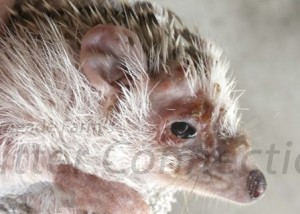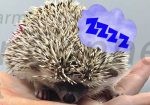Last Updated on November 8, 2022.
Overview
-
- Small amounts of fungal spores can be found on the skin of healthy humans and animals.
- An overgrowth of fungus can cause infections and dry skin.
- Fungal infections and bacterial infections may be found at the same time.
- Dermatophytes are fungi that can cause infections of the skin, hair, and nails due to their ability to utilize keratin. All these ProvLab links don’t bring you anywhere but their home page and I searched for all of these. But when I Googled the wording these other ones came up. Keratin hydrolysis by dermatophytes – PubMed (nih.gov)
- The organisms colonize the keratin tissues, and inflammation is caused by host response to metabolic by-products. These infections are known as ringworm or tinea, in association with the infected body part.
- Occasionally the organisms do invade the subcutaneous tissues, resulting in kerion development. https://www.bionity.com/en/encyclopedia/Dermatophyte.html
- Kerion – A severe form of tinea capitis, in which well-circumscribed parts of the scalp are transformed into a painful, boggy, inflamed, confluent mass with loosened hair, purulent folliculitis, crusting, often with lymphadenopathy, due to a zoophilic superficial mycosis, Trichophyton verrucosum, or T mentagrophytes; geophilic or anthropophilic fungal infections may abruptly become Kerion. Kerion | definition of kerion by Medical dictionary (thefreedictionary.com)
- Depending on the species the organism may be viable in the environment for up to 15 months. There is an increased susceptibility to infection when there is a preexisting injury to the skin.
- Quilling is a prime time for fungal overgrowth and infection.
- Already dry skin makes hedgehogs more susceptible to bacterial and fungal infections.
- Fungal infections are often treated with either homeopathic methods, over the counter creams and/or shampoos, or prescription medications.
- If a hedgehog has a fungal infection, it might be best to check other animals or humans that came in contact with the animal.
- Fungal spores travel easily through the air making transmission quite simple.
- Fungal infections may be complicated by the use of any products that contain SLS, ALS, and other detergents including, but not limited to (baby bath, shampoo, soft soap, toothpaste, and laundry detergent). If this is in fact a fungal infection, then this would obviously not be the cause; however, it could very well be hindering healing and even exacerbating the problem.
Types of Fungus
- Microsporum – Both microconidia and rough-walled macroconidia characterize Microsporum species. There are 19 described species, but only 9 are involved in human or animal infections. http://www.provlab.ab.ca/mycol/tutorials/derm/dermwhat.htm
- Trichophyton – When produced the macroconidia of Trichophyton species are smooth-walled. There are 22 species, most causing infections in humans or animals. Trichophyton | Mycology | University of Adelaide
- Microsporum
- Trichophyton mentagrophytes (granular) (rodents, rabbits, hedgehogs, etc.) Trichophyton in Hedgehogs
- Pityrosporum
- This yeast infection is referred to as Malassezia.
- According to MayoClinic.com, the primary fungus found on the human scalp is called Malassezia
- Candida albicans
- This fungus can also cause ringworm.
- It is contagious and will spread on contact.
- A compromised immune system may further complicate the overgrowth of Candida. This can happen in a couple of different ways, the most common being treatment with antibiotics, and low fat, high carb diets (refined grains and sugars). http://www.earthclinic.com/CURES/scalp_infections.html
- Tinea capitis (also known as “Herpes tonsurans”, “Ringworm of the hair,” “Ringworm of the scalp,” “Scalp ringworm”)
Diagnosis
- The best way to determine if your hedgehog has a fungal infection is to go to your exotic veterinarian.
- Your veterinarian may do a skin scrape to see if there are any mites, but many veterinarians and owners prefer to treat for mites first as a precautionary measure.
- Revolution for hedgehogs is very cost effective, safe, and is more reliable than the actual test for mites.
- If the hedgie still has dry skin after the Revolution treatment, you’ll want to have your vet test for fungal infections.
- The most common way to diagnose fungal infections of the skin used to be a Wood’s lamp, more commonly called a black light today. Not all fungi fluoresce in ultraviolet light, but many species do. Over time, these easy-to-spot species have been replaced by species that do not fluoresce, the major exception being ringworm, of which about half the species fluoresce in UV light. Read more: How to Use Black Light to Diagnose Fungus | eHow.com http://www.ehow.com/how_5841395_use-black-light-diagnose-fungus.html#ixzz2A3ZobGwn
Treatment
- Veterinary treatment is absolutely necessary when simple home remedies do not take care of the problem.
- Both oral antibiotics and external fungal treatment may be prescribed. Veterinarians should NOT prescribe oral antibiotics and oral fungal medications at the same time.
- Change bedding and wash all fabric within the cage, as well as thoroughly clean the cage regularly for up to a week after the infection is gone.
Homeopathic Remedies
Apple Cider Vinegar
- According to Earl Mindell, author of “Dr. Earl Mindell’s Amazing Apple Cider Vinegar,” vinegar is capable of killing fungus and bacteria, especially when applied to the affected area repeatedly. Therefore, it is a helpful topical scalp fungus treatment. This is also helpful for treating dry skin and reducing dandruff, not caused by fungus.
- Vinegar Application
- According to Dr. Linda B. White and Steven Foster, authors of “The Herbal Drugstore: The Best Natural Alternatives to Over-the-Counter and Prescription Medicines”, you shouldn’t use straight vinegar, which would be much too harsh. Instead, boil 1-2 cups of vinegar then let it cool, measure 1/8 cup and mix it with a cup of water. Apply to the affected area twice a day
- Apple Cider Vinegar and Hydrogen Peroxide. Dilute them by 1:10:
- 1 part ACV
- 1 part Hydrogen Peroxide
- with 10 parts water
- Leave the mixed solution on the scalp for about one minute before rinsing away in water. Repeat this again if the infection is severe enough. Avoid getting the solution in the eyes as it may cause stinging. You do not need large amounts of the concoction, only small amounts… just enough to get it to the scalp.
- Apple Cider Vinegar and Baking Soda Recipe
- Mix 2 ounces of baking soda in 10 – 12 oz. of water and gently pour over the affected area. Rinse the baking soda out and follow with 2 ounces of vinegar in the same amount of water. Let the vinegar stay on for about a minute as it helps to restore scalp ph. Both baking soda and vinegar are anti-fungal.http://www.earthclinic.com/CURES/scalp_infections.html
- Vinegar Application
- Results and Other Options
- Because the vinegar is mixed with water, it should be generally mild and harmless to the skin.
- Even so, it can burn your eyes, so keep it away from this area and apply it in a well-ventilated space.
- You should see a reduction in irritation and dry skin within a week, and it should clear up within a month, according to White and Foster. If the fungus still doesn’t dissipate, see a doctor for medicated shampoos and other treatments.
- If the fungus hasn’t cleared up within a few weeks or gets worse, see a doctor for a stronger course of treatment.
- http://www.livestrong.com/article/502682-information-about-vinegar-scalp-fungus/#ixzz2A7Ag4nm9
- http://www.livestrong.com/article/502514-apple-cider-vinegar-for-fungus/#ixzz2A7BJDZHW
Borax
- Simply dissolve the borax in water. Use ½ to 2/3 cup per gallon (too much will leave borax crystals in the bottom of the jug) Soak your hair in it and shampoo into the scalp. I leave it in while I shower, and then rinse it out. I have been following that with the ACV / H202 solution that TED recommends and rinse again. I may discontinue the ACV rinse, but so far I haven’t wanted to mess with a good thing.
- Peroxide
Over-the-Counter Products
Chlorhexidine
- It is widely used in hospitals, veterinary clinics, and dental products/clinics, and even some Goodwill Stores.
- Used in many human health care products.
- Dental rinse solutions
- Toothpaste
- Ear wash
- Shampoo
- Cleaning solution or powder
Disinfectant
- Chlorhexidine can kill a variety of pathogens.
- Fungus
- Yeast
- Viruses such as MRSA and AIDS
- Bacteria
- Dermatitis
- Pyoderma
- It is ineffective against parasites so a separate treatment for mites is required.
- Specific Treatments
- It is often used to treat bacterial skin infections.
-
- Directions for treatment
- Purchase Chlorhexidine either through a veterinarian, a local feed store, or order online. Another name for the product is Nolvasan which is slightly different, possibly more effective than the “generic”. Below are some examples
- Get a small ice cream bucket or other small bucket and make the solution (as directed on the label) and soak your hedgehog. I put enough warm water in the bucket so the hedgehog has to keep their nose out of the water. Soak back and legs but avoid ears and nose.
- Thoroughly dry, add olive oil to skin
- Repeat daily for two weeks.
I’ve had customers who work in all these places plus one customer used it at Goodwill where they worked. Another customer works for the Purell Company and they make wipes for elderly skin care the same as I make wipes with Bounty which can be found in our Chlorhexidine Disinfecting Wipes.
- Directions for treatment
.Nizoral®
-
- A human antifungal, dandruff shampoo.
- Active ingredient Ketoconazole 2%.
- http://en.wikipedia.org/wiki/Ketoconazole 7/27/12 Ketoconazole is usually prescribed for topical infections such as athlete’s foot, ringworm, candidiasis (yeast infection or thrush), and jock itch. The over-the-counter shampoo version can also be used as a body wash for the treatment of tinea versicolor.[2][3] Ketoconazole is used to treat eumycetoma, the fungal form of mycetoma.
- Malaseb®
- The patented Malaseb® formula is powerful enough to help combat dermatological fungal and bacterial infections, and gentle enough to preserve and condition the hair coat of dogs and horses.
- In an evidence-based systematic review, the only topical formulation recommended for the management of Malassezia dermatitis is 2% Miconazole Nitrate with 2% Chlorhexidine Gluconate.
- Malaseb® Works Hard, But Not Harshly
- FREE FROM DYES AND PERFUMES – Some dog shampoos contain harsh dyes or perfumes that can make the original problem worse. Malaseb® Medicated Shampoo is free from both dyes and perfumes to avoid further exacerbation of sensitive skin issues.
- DESCALES AND DEGREASES THE COAT WITHOUT STRIPPING – Malaseb® uses a surfactant base to remove damaged lipids from the skin and simultaneously conditions the coat to retain moisture. This helps to ensure your pet’s coat is healthy and luxurious — just the way you both want it.
- CONOFITE (miconazole nitrate) Lotion® https://www.drugs.com/vet/conofite-lotion-1.html
- CONOFITE (miconazole nitrate) Spray or Lotion® is a synthetic antifungal agent for use on dogs and cats. It contains 1.15% miconazole nitrate (equivalent to 1% miconazole base by weight), polyethylene glycol 400, and ethyl alcohol 55%.
- CONOFITE (miconazole nitrate) Spray or Lotion is indicated for the treatment of fungal infections in dogs and cats, caused by Microsporum canis, Microsporum gypseum and Trichophyton mentagrophytes.
- Blue Star Ointment®
- The following information is from http://www.bluestarointment.com/ringworm/
- Consistent ringworm treatment with Blue Star Ointment usually clears up the fungal infection in just three days. However, continued ringworm treatment is recommended for up to a week after the skin is clear to prevent relapse.
- Lime Sulfur
- Sulfur has long been used by dermatologists because it possesses antifungal, antibacterial, and keratolytic properties that are effective in killing hair follicle infections.
- It has been widely used to treat disorders such as acne vulgaris, rosacea, seborrheic dermatitis, dandruff, pityriasis versicolor, scabies, and even warts. Many products containing sulfur are available commercially online and in drugstores. http://www.ehow.com/way_5822596_use-skin-well-antifungal-care.html
- Be cautious of products containing zinc oxide or tea tree oil, even though tea tree oil also is an antifungal agent.
Veterinarians Karen A. Moriello, from the School of Veterinary Medicine at the University of Wisconsin-Madison, and Susan Newbury, director of Animal Medical Services at the Dane County Humane Society, recommend the lime-sulfur dip as a cost-effective and safe treatment, even for young cats.
Read more:
Ear Fungus
- Symptoms
- Light gray to creamy colored “finger-like” growth that begins over the edges of the ears.
- Flaky in structure on the ears and will fray off at the edge.
- The fungus is eating away at the hedgehog’s ears, so treatment must occur.
- Cause
- Many bedding products contain fungus.
- A very moist environment can increase fungal growth.
- Treatment
- Over the counter athlete’s foot cream can treat mild cases.
- Clotrimazole topical drops or other fungicidal applications administered twice a day until the fungus falls off the ear.
- Veterinarians can determine the damage done by the fungus, and check the ear internally to be sure no damage has been done.
- All fungicides must stay out of the hedgehogs’ eyes.
- Some veterinarians recommend that you rub Betadine on the ears.
References:
MayoClinic.com; Dandruff: Causes; November 2010
“Dr. Earl Mindell’s Amazing Apple Cider Vinegar”; Earl Mindell, Ph.D.; 2002
Kid’s Health from Nemours – Fungal Ringworm: September 2019
Read more:
http://www.livestrong.com/article/502514-apple-cider-vinegar-for-fungus/#ixzz2A7BT5nDm
http://www.natural-treatment-guide.com/athletefoot/foot-fungus-treatment.html
Contributors: Gail Smith, Melissa Ramos, Coley Emde







